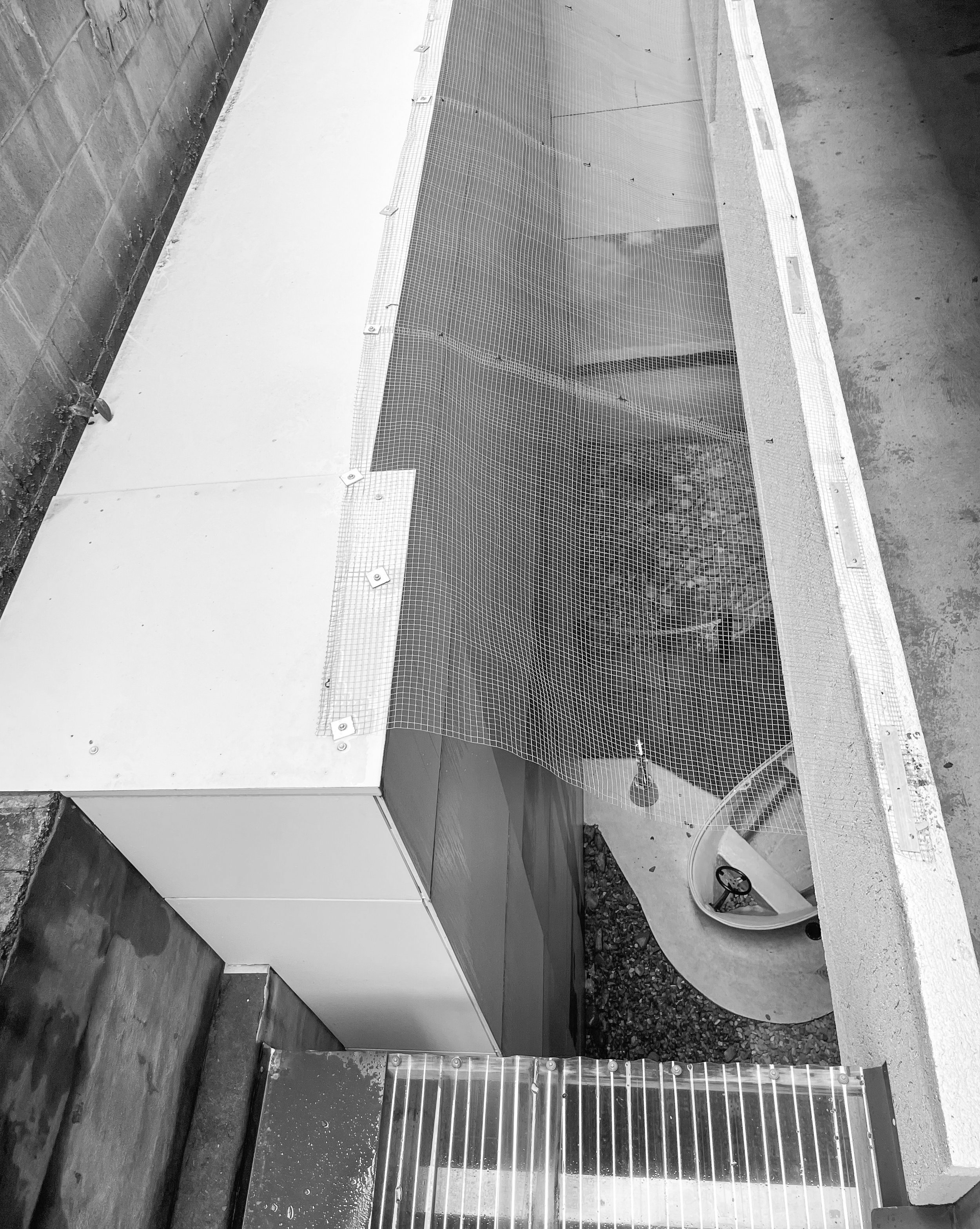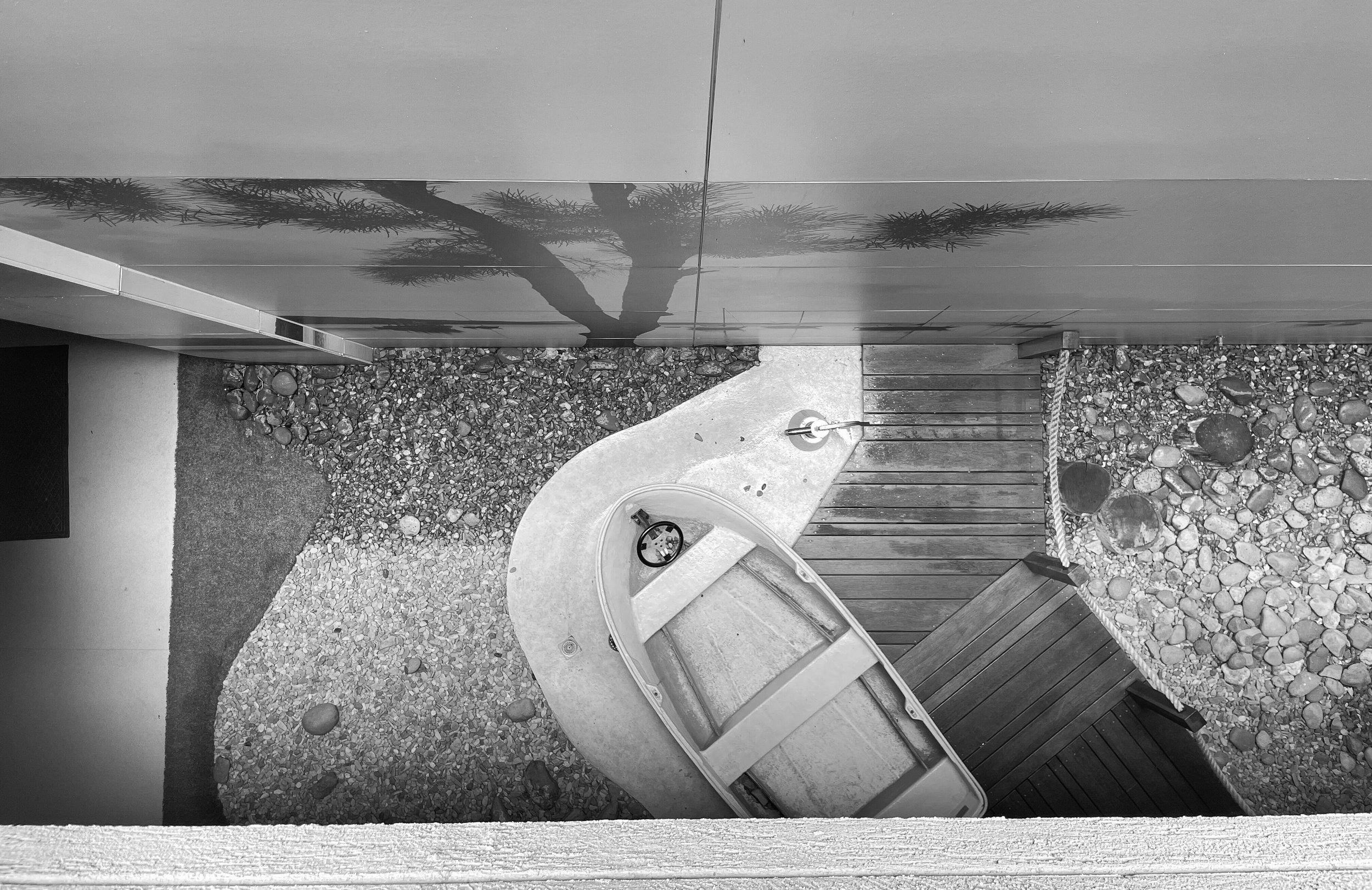Stacks
A walk through Bolton Street Carpark, Newcastle
One rainy day in Newcastle, with the parks too damp for play, my son and I headed to one of our favourite spots in the city: the sheltered labyrinth that is Bolton Street Carpark.
Bolton Street carpark has been an important part of my life for at least twenty years now, although never as a place to park my car. I discovered it through one of my many meandering wanders around that part of the city, a favourite quadrant of streets that feel mostly unchanged from my student days, from some of the memories my father has shared from his youth around here. He went to school next door to Bolton Street carpark, across the road from Rose Cottage, one of the first homes built during colonial times.
It is the last remaining publicly accessible rooftop carkpark that lets you survey the entire city from its apogee. I set my first novel up here, I brought my wife here when we were dating, how she balanced on the concrete parking blocks against declining sunlight, and I've brought my daughter and my dog up here and now my young son, passing on my love of empty public spaces and high vantage points.
The rain pauses for a couple of minutes as we begin our journey from the top of the carpark on the eighth floor with a goal to descend floor by floor until we hit the ground.
Looking over the railing from the roof we spot a garden nestled into a thin strip of partitioned space on what looks like the lower section of the seventh floor. It has an open roof for sunlight.
We decide to check it out, carefully treading sloping ramps stamped 'No Pedestrians'. I'll explain to my son what this means one day soon, and justify the transgression.
The garden is curious and I can't quite work out if it is a herb garden for nearby residents in the neighbouring apartments - there are tomatoes growing, heads of lettuce, some limes, a few grass sprouty shoots I don't recognise - but then my son spots some jars with tooth picks holding seeds aloft that look like children's science experiments. The walls of the garden are painted with large colourful geometric shapes, with a smiley face on a green canopy covering a storage room. This must be for children, and then I remember a preschool has recently opened on the street level near here - that answers it, this must be for them, perhaps they do not have garden space in their yard, whether they even have a yard I do not know.
We continue down the seventh and sixth floors, looking out through the long horizontal gaps that frame the buildings that face the carpark. These gaps remind me of pillbox embrasures, we have some on the hill at Fort Scratchley, slits in the bunkers that let in the light.
The buildings that face the back of Bolton Street Carpark are mostly residential, apartments new and old, a street back from the Cathedral and Newcastle Grammar School. When I was a pipe organ student during high school I attended some performances at the cathedral and even played it once or twice. I remember one night, attending a performance by my teacher who lived on the grounds of the cathedral, holding a book of Kafka's short fiction when an elderly couple next to me pointed it out and thumbed through it, saying they too read Kafka when they were my age.
My son and I watch as a parking garage beneath one of the adjacent apartments opens up and contains a mechanical floor lift that raises an artificial base off the ground, raising a car and a motorbike to the ceiling, allowing a resident there to use the floorspace for a gym workout.
Looking towards the right, we spot something completely curious that neither of us can decode: it looks like a small boat, somewhere towards the bottom of the carpark.
One of the nicer aesthetic gains from spiraling down the carpark is the number of trees you come upon at different turns, peering in from the outside. London planetrees line Bolton Street and create a wash of amber limeade between the fourth and fifth floors of the carpark.
On the opposite side there is a chaotic assemblage of overgrown trees that are crushing through chain mesh fences and threatening to uproot old sheds pushing in from the high side of the street. You'd have no idea any of this was here just by driving past - these are deep yards with peculiar allotments of seemingly unusable land that jut against the boundary of the carpark, collapsing in places onto the plastic corrugated roof panels that cover the lower floors and catch the rain in loud percussive ostinatos all tutti.
That being said - where can we find the boat.
Before we get closer to the little boat we see a mural of the infamous Pasha Bulker ship that ran aground on Nobbys Beach on the eighth of June two thousand and seven. I remember I was teaching in Maitland at the time and the severity of the storm meant we needed to send students home. My classroom was a former sports-storage room and we were huddling the students at the back of the room as the rain lashed the exposed front of the hall we were attached to, waiting on their parents to come pick them up before roads were closed. All the families came within thirty minutes of our initial call, except for one father who was nearly two hours delayed in picking up his son. He had to drive down the highway to Newcastle first to check out the Pasha Bulker, and he got stuck in the inevitable traffic and rerouting caused by flash flooding and rubbernecking. I get it.
Near the elevator shaft on the first floor there are air conditioning units covered in astroturf, surrounded by a carpet of astroturf, for reasons unknown.
And, there is the boat, clear as day now, we're right above it and a bed of rocks and timber walkway. We head down the ramp to the ground floor to check it out.
When we get to the ground floor we're confused. Where is the boat, and the rocks, and the timber. It's just car spaces down here, there's nothing else to it. Were we looking down at a space outside the carpark perhaps, like the sheds and trees and apartments pushing up against the side. I asked my son, wondering if his three year-old mind had another solution. He thought we should go back upstairs and look again, a solid strategy, so we walk back up to level one and look down again. Sure enough, the boat is right there.
We return to the ground and look at a series of backlit panels near a couple of car spaces. Is the boat possibly behind this wall - I lift my son up to try to look over one of the panels and sure enough he gets a glimpse of the boat, it is on the other side. A locked storage door is nearby, but none of it makes any sense, until it clicks and I feel daft for not realising it earlier: the garden on the sixth floor that seemed to be managed by the nearby preschool, this too must be part of their yard space, a repurposed cavity given new life.
Stepping outside on the street it is clear that the boat play area is absolutely connected to the preschool, albeit in a manner that nobody would assume from the outside, given the idiosyncratic way it yields space from the carpark.
We cross the road, the rain has stopped now, and I take my son to see Rose Cottage that I mentioned earlier, one of the oldest abodes in the area, built circa eighteen thirty (depending on the validity of the research, maps and watercolour paintings of the area you choose to acknowledge).
The cottage has been used by a solicitor until recently and is completely obscured from roadside view by offices built in front. These offices were not always here, though - when my father went to school across the road the cottage had nothing in front of it, according to photos from the period, just some grass, a Hills Hoist and scattered foliage. Yet nobody, not my father nor others from the era that I've talked to, can ever remember seeing the cottage from the school or the road.
Like the boat, perhaps an unexpected geometry provided it cover.









